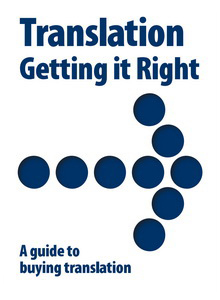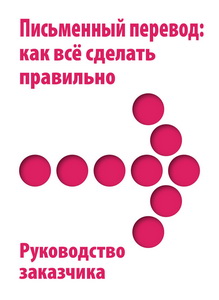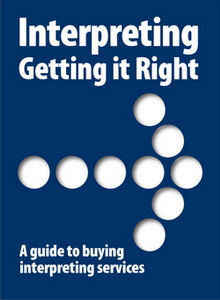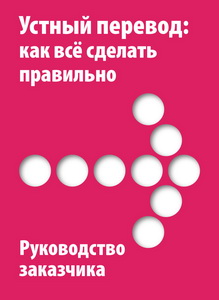Are you a buyer of translation services?
Lingwella proudly presents:
Popular guidelines for buying translation and interpreting services are now available in the Russian language!
These two “translator user manuals” were originally written by the American Translators Association. Lingwella’s translators and layout designers created identical copies of them in Russian. We recommend these guides as helpful sources of information and advice for all types of business executives looking at outsourcing their translation jobs.
Hit the corresponding icon below to open either English or Russian copy:
What should you know about professional translation before choosing a translation vendor? How much does it cost? Translation for information or translation for publication — how important is style? What about machine translation? What can be done to reduce risks of poor translation quality?
By following even half of the recommendations from this guide, you will increase your chances of getting a translation that fully meets your requirements.
How do professional interpreters work? What is the difference between consecutive, simultaneous interpreting and sight translation? What factors influence the cost of interpreting services? What should you keep in mind if you want to hire an interpreter perfectly suited for your particular communication needs?
This guide provides comprehensive answers to these and other pertinent questions. It is recommended not only for buyers of language services but for anyone interested in interpreting as a profession.
What you as a customer can do to contribute to our comfortable work and successful completion of your translation?
Below are a few recommendations, following which you will help us successfully accomplish your task and avoid possible misunderstandings.
- Tell us more about the intended purpose of the target text. Who is the translation addressed to? For what purposes and in what way will the translation be used? Is it planned to publish the translation in open sources (print media, Internet)? This information will allow our project manager to select the translators best suited for your specific project, and the translators themselves will take a more thoughtful approach to selecting lexical equivalents and finding other translation solutions.
- Negotiate all your translation requirements and wishes with us in advance. If your organization uses specific terminology and you want it to be preserved in translation, please provide us with a glossary, a list of special terms and abbreviations, sample bilingual documents and other reference materials. If you want a particular national language variant (such as American English, Canadian French or Brazilian Portuguese) to be used, please let us know in advance.
- Provide the source material for translation only in its finalized version. Make sure that you are submitting the final edition of the document for translation, not one of the drafts that is still being developed.
- If proper names (first names, surnames, addresses, localities) occur in the documents to be translated, it is necessary to coordinate with us their correct spelling in translation in order to avoid possible mismatches with their spelling appearing in other documents of the customer (e.g. in a foreign passport or visa).
- Remember that the quality of translation depends to a great extent on the quality of the source text. If a source text contains numerous flaws and shortcomings (such as inconsistency with the general requirements of a language, lack of uniformity in style and terminology, apparent contradictions, inaccuracies and errors), or if a text was originally written by a non-native speaker or represents a poor-quality translation from another language, it is unlikely that we will be able to make a good translation out of it. Furthermore, poor-quality source text increases the time needed for translation. This applies in particular to technical documents written in so-called “Chinese English”. We have dealt with such documents repeatedly and warned the client in advance that we cannot be held responsible for possible difficulties in perception of the translation and understanding of its separate fragments, which resulted from obvious shortcomings of the source text and not due to the translator’s fault.
- Set reasonable deadlines. Remember that quality translation requires sufficient amount of time, and that too short a time frame and too fast a pace for the translator and editor may have a negative impact on the quality of the final translation. Ideally, the translation should “lay flat” before being delivered to the client, meaning that the translator should return to his or her translation the next day to check everything thoroughly and make new edits and improvements. Additionally, please keep in mind that complex graphic formatting of the translated text and work with labor-intensive source document formats (e.g., PDF, Power Point, scanned copies), charts, diagrams, formulas, complex tables, images, non-editable inscriptions on images, etc. requires additional time and effort and inevitably results in increased translation time and cost.
- Do not violate pre-agreed or contractually stipulated terms of payment for our services. Failure to pay us on time may be the reason for our refusal to continue working with you.





